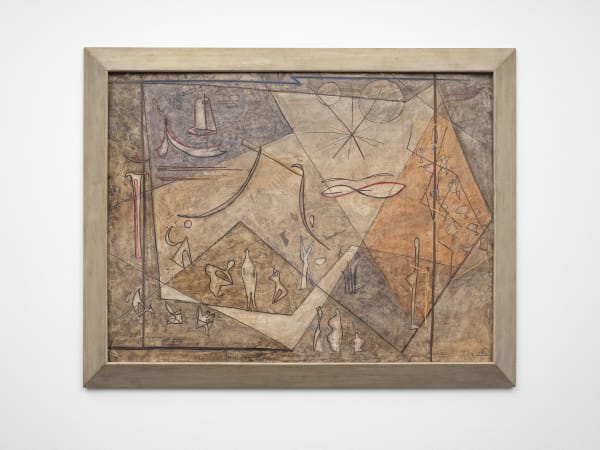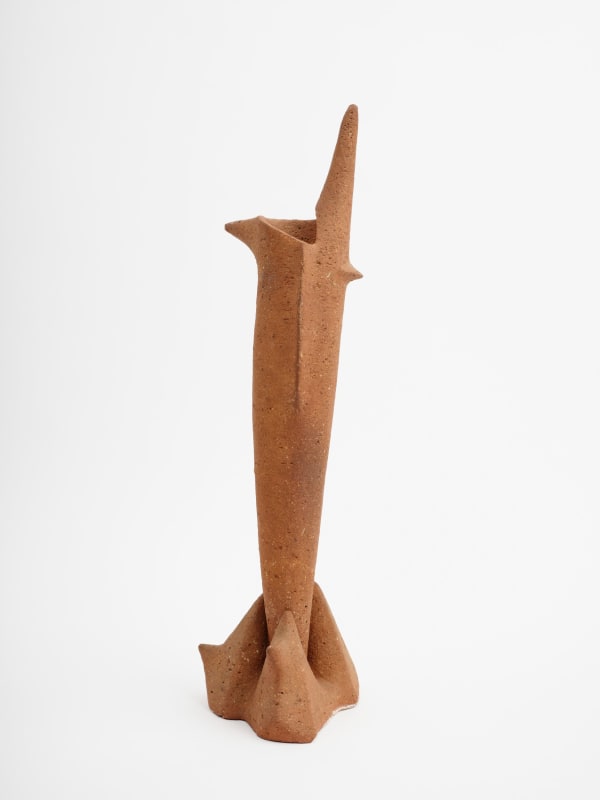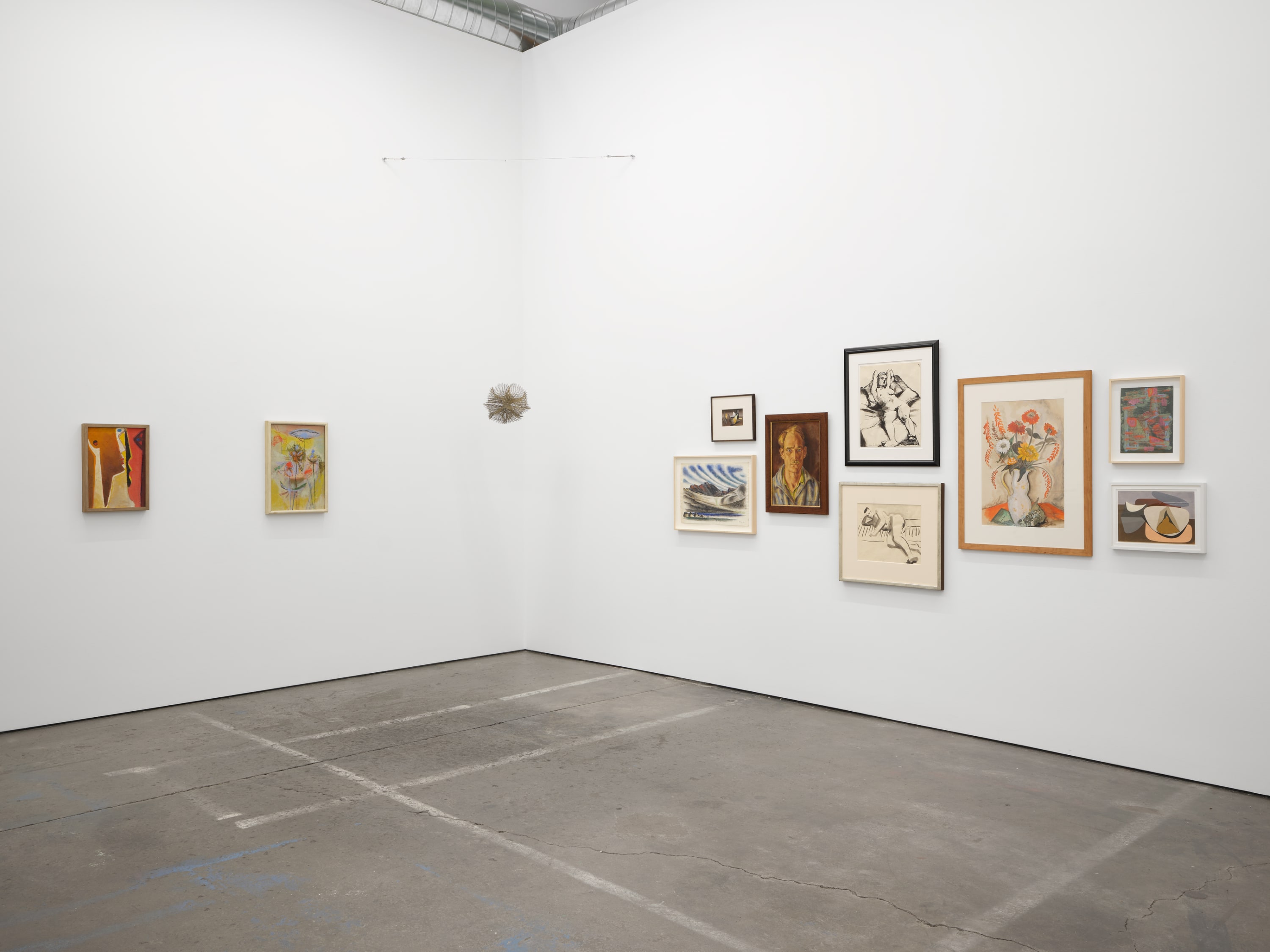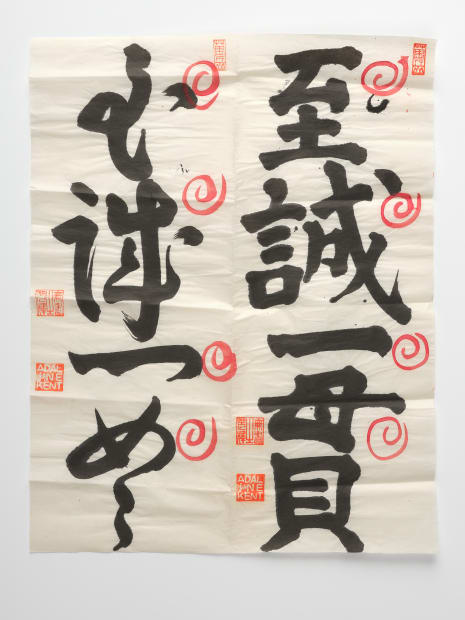Adaline Kent
-

-
Altman Siegel is pleased to present an exhibition of sculpture, drawings, and uniquely incised paintings on Hydrocal by midcentury artist Adaline Kent (1900-1957). This exhibition marks the gallery’s first presentation with the artist’s estate and is the first exhibition dedicated to Kent’s work in San Francisco in more than two decades.
-

-
Adaline Kent lived and worked in the San Francisco Bay Area for most of her life. Inspired by time spent in the mountains of the High Sierra - and her observations of the way bodies move through space - her work captures elegant, elemental movements through biomorphic shapes and forms. Evoking a diverse array of imagery ranging from mountains, streams, and trees to the more abstract infinity symbol, Kent was a pioneer of the mid-century modernist aesthetic, working with luminaries from renowned landscape architect Thomas Church to storied gallerist Betty Parsons. Her dedication to creating visual movement and balance through static form transcends time, remaining as deeply resonant today as it was during Kent’s lifetime.
-
-
Adaline Kent was born in 1900 into a prominent family of early environmentalists. Her father, California Congressman William Kent, and her mother, Elizabeth Thacher Kent, a leader in the cause of women’s suffrage, donated the land that established the Muir Woods National Monument, preserving a large swath of old growth coast redwoods in Marin County, California. In the 1920s, after graduating from college (Vassar 1923), Kent studied under the social realist sculptor Ralph Stackpole while attending the California School of Fine Arts (later known as San Francisco Art Institute) and traveled to Paris to study with Émile Antoine Bouredelle at the Académie de la Grande Chaumière. Upon returning to San Francisco, Kent established a studio in the “Monkey Block,” becoming a fixture in the vibrant neighborhood of artist studios on Montgomery Street where the Transamerica building stands today.
-
 Robert B. Howard, Photo of Adaline Kent hiking in the Sierras, c. 1930, Silver gelatin print
Robert B. Howard, Photo of Adaline Kent hiking in the Sierras, c. 1930, Silver gelatin print -

-
Kent was drawn to the mountains in the winter as well; she was an avid skier and an early investor in Sugar Bowl, the Lake Tahoe ski resort that continues to attract San Franciscans into nature today. The 1944 drawing, Winter Landscape depicts the bowl from above with sculptural biomorphic beings gliding across the snowy vista.
-
-
The 1940s and World War II brought many Americans home who had been living abroad, including Kent’s brother-in-law, Charles Houghton Howard (1899–1978), a Surrealist painter who returned from living in London. The influence of Surrealism is evident in Kent’s increasingly abstract work. The exhibition includes three incised paintings in Hydrocal, in which the landscape dissolves into biomorphic shapes and forms. Unique in the history of modernism, these works straddle the line between drawing, painting, and sculpture. The infinity symbol recurs here in Song, from 1945, which echoes the fluid composition of the Cascade from the Mountain drawings, and again in Writ, 1947.
-
-

-
-

-
-
-
-

-
-
-
-

-
-
-
-
By 1949, Kent’s work found a wider audience as she became one of the few woman artists to exhibit with storied American artist and New York gallerist, Betty Parsons. As Kent evolved alongside contemporaries such as Ruth Asawa, Mark Rothko, and Isamu Noguchi, her work grew more abstract. Punctuated with negative spaces, these malleable sculptures lacked specificity, evoking imagery ranging from the branches of evergreen trees to the slopes of mountain ranges using dimpled, earthen terracotta. A 1954 trip to Greece, Egypt and Paris inspired a series of later terracotta sculptures on view. These vessel forms draw from the Mediterranean landscapes and ancient artifacts that Kent encountered and documented on her travels. The perforated terracotta forms are reminiscent of a series of her lamps commissioned for the Ahwahnee Hotel, Yosemite National Park’s iconic lodge in 1954.
-

-
-
-
 View of Adaline Kent's studio at 523 Francisco Street, San Francisco, 1957. Photography by Robert B. Howard
View of Adaline Kent's studio at 523 Francisco Street, San Francisco, 1957. Photography by Robert B. Howard -
-
-

-
Adaline Kent was a member of the San Francisco Bay Area’s most prolific midcentury artistic circle. The second gallery of the exhibition places the work of this Bay Area legend within the context of the dynamic artistic milieu in which she lived and worked. In marrying Robert B. Howard, she joined the “First Family of Bay Area Modernism” including architect John Galen Howard, who designed the Campanile at the University of California Berkeley, surrealist painter Charles Howard and his wife Madge Knight, social realist muralist and printmaker John Langley Howard; architect of Coit Tower Henry Temple Howard, and his wife artist Jane Berlandina.
-
 "Adaline Kent's Circle," 2024, Installation view, Altman Siegel
"Adaline Kent's Circle," 2024, Installation view, Altman Siegel -
 Adaline Kent, Calligraphy work, c. 1950
Adaline Kent, Calligraphy work, c. 1950 -
Adaline Kent’s prolific career ended abruptly in a tragic car accident in 1957. The following year, her life and work were celebrated in a retrospective exhibition at the San Francisco Museum of Art which then traveled to the Betty Parsons Gallery in New York. Through the steadfast advocacy of her family, Kent’s work is represented in the collections of many important American Museums today. In 2023, Apsara DiQuinzio curated the first solo museum presentation of Adaline Kent’s work in nearly sixty years at the Nevada Museum of Art. Adaline Kent: The Click of Authenticity was accompanied by a major monograph solidifying Kent as one of midcentury America’s most innovative artists and a key figure in the history of the San Francisco Bay Area. Kent’s deep commitment to capturing the authentic energy of our natural landscape, and the feeling of infinity these vistas elicit, continues to resonate through her work. This evocation of limitlessness, this rush of fresh air her art inspires, speaks to the timeless qualities Kent strove to capture in vibrant physical form.
-
 "Adaline Kent Memorial Exhibition," Installation view at the San Francisco Museum of Modern Art, March 20 - April 6, 1958. Photography: San Francisco Museum of Modern Art Archives
"Adaline Kent Memorial Exhibition," Installation view at the San Francisco Museum of Modern Art, March 20 - April 6, 1958. Photography: San Francisco Museum of Modern Art Archives -
Max Blue and Jeff Gunderson on Adaline Kent
June 29, 2024 -
Press
-
Adaline Kent
Contemporary Art DailyContemporary Art Daily, Jul 12, 2024 -
Adaline Kent Comes Home
Alta Journal, Jun 27, 2024 This link opens in a new tab. -
A midcentury modernist master at Altman Siegel
San Francisco Chronicle DatebookSan Francisco Chronicle Datebook, Jun 21, 2024 This link opens in a new tab.
-
-
 Photography by Harry Redl
Photography by Harry Redl































